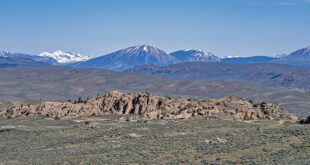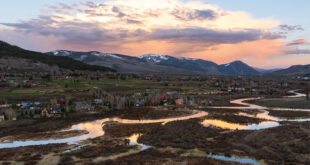On Sunday, I spent most of my day at the Crested Butte Farmer’s Market selling baked goods on behalf of Partners, Gunnison County’s youth mentoring organization. While I’ve been frequenting the market this summer and last, this was the first time I’ve been there from start to finish. Early that morning, I watched as the street was cleared and vendors were propping up their tents and wares, setting out baskets of beautiful breads and pastries, stacking tables high with crispy vegetables and the first of the summer fruit.
Market manager Kevin McGruther seemed to be everywhere at once, providing change for someone who forgot it, hooking up long extension cords, directing new vendors to their booths, collecting and distributing paperwork. A friendly neighbor stopped to try to help us erect our tent, which resembled a giant, unwilling arachnid, and more still came to the rescue when the table refused to hold our burgeoning baked goods.
While the market officially opened at 10 a.m., I quickly learned that the crowds come earlier, residents eager to get their choice of the top produce. Soon, the market was humming, a band’s music streaming down the street. A friend shared some unforgettable cherries when she stopped by to peruse our bounty of cupcakes, cookies and pies.
It’s an understatement to say that Crested Butte’s Farmer’s Market has caught on in a big way. Last year’s market grossed more than $112,000 in total sales for the participating vendors—one can only imagine that this year will be even more successful.
There are good reasons behind the market’s popularity. Number one, it’s more fun to shop on Elk Avenue than the grocery store and shopping local makes good sense.
According to www.sustainabletable.org, on average only 3.5 cents of each dollar spent on food in the grocery store goes to the farmers who produced it. Farmer’s markets help change that—on average farmers keep 80 to 90 cents of each dollar spent by the consumer.
We can also feel good that our food is being produced locally. This one startled me—approximately 40 percent of our fruit is produced overseas. And even though most of us live about 60 miles from an apple orchard, the apples we typically buy travel 1,726 miles between the orchard and our homes.
Or check this one out: In the United States, a wheat farmer can expect to receive about six cents of each dollar spent on a loaf of bread—the same as the wrapping. A typical carrot has to travel 1,838 miles to reach your dinner table.
Happily, that’s not the case at the Crested Butte Farmer’s Market, where everything sold there must be made in the state of Colorado. That kind of proximity makes everything taste a little bit better, a little bit crunchier, a little better for you.
Almost as quickly as it started, the market began slowing down—the crowds thinned out, with the latecomers scanning the emptied tables and lamenting that they’d missed out. Our friendly neighbors helped disassemble our uncooperative tent and everyone was quickly tucking away boxes, coolers into their vans and trucks, heading back to the farm, kitchen or workshop to get ready for next week.
—Aleesha Towns
Check Also
Impressed with Hurd
The current political reality in Gunnison County and Crested Butte is we are an island …
 The Crested Butte News Serving the Gunnison Valley since 1999
The Crested Butte News Serving the Gunnison Valley since 1999





